The Comprehensive Guide to Foam Longboard Surfboards
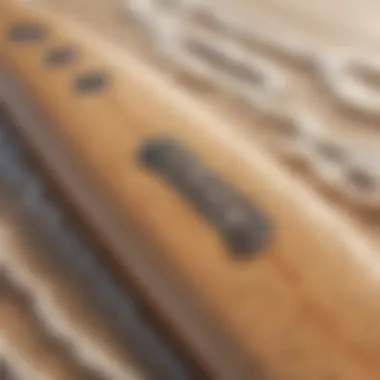
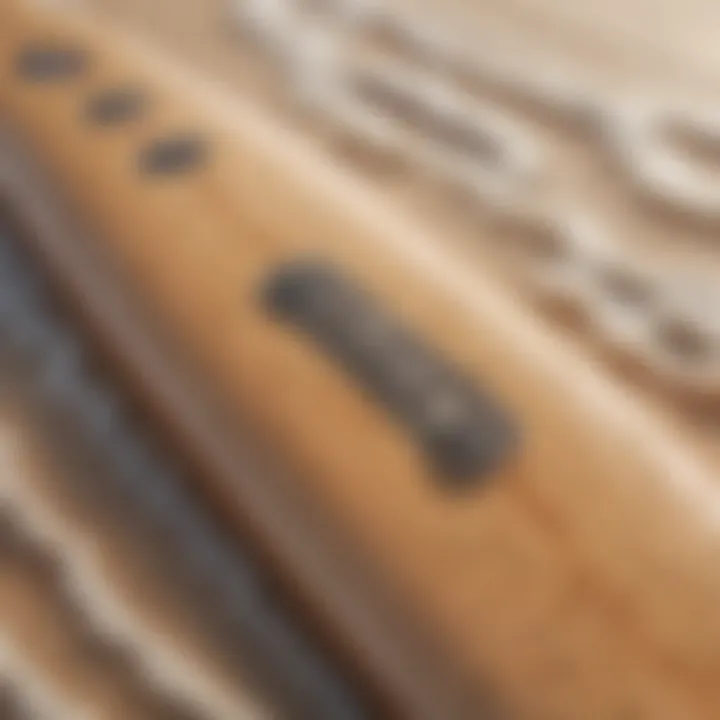
Intro
Longboard surfing has evolved quite a bit over the years, garnering attention from both seasoned surfers and greenhorns hopping into the sport. Among the various options available on the market, foam longboards stand out for a bunch of reasons. Not only do they make for a fantastic starting point for newbies, but they also enable experienced surfers to enjoy a different kind of ride. These surfboards are known for their durability and buoyancy, which help to foster a safer surfing environment. The purpose of this guide is to break down everything important about foam longboard surfboards—from their design to the essential techniques that can be employed on them.
As we dive deeper, we'll take a look at their construction, benefits, and the eco-conscious choices surfboard manufacturers are embracing today.
Surfboard Reviews
Types of Surfboards: An Overview
In the world of surfing, not all boards are created equal. The foam longboards, in particular, cater to a wide range of surfers, whether they're just starting or looking for a more laid-back ride. Typically, surfboards come in various materials and sizes, suited for different conditions and skill levels. Below are some common types:
- Shortboards: Fast and agile, perfect for tricks and quick maneuvers.
- Fish Boards: Wider and shorter, ideal for smaller waves and smoother rides.
- Funboards: A blend between longboards and shortboards, they offer versatility and stability.
- Foam Longboards: Great for beginners, they provide excellent flotation and stability.
While shortboards and fishes may appeal to those looking for speed and agility, foam longboards fill a significant gap, offering a gateway into the sport for rookies and a foundation for refining techniques.
Best Surfboards for Beginners and Pros
Choosing the right foam longboard can be a pivotal factor in a surfer's journey. Here are some standout options that cater to both newcomers and experienced surfers alike:
- Wave Bandit 8’ Retro:
- South Bay Board Co. 8’ Guppy:
- Boga Surf 9’ Yoga Board:
- Soft Top 10’ Longboard:
- Length: 8 feet
- Feature: Great flotation and easy to paddle, perfect for surf schools.
- Length: 8 feet
- Feature: Wide shape provides stability, making it a fantastic beginner choice.
- Length: 9 feet
- Feature: Not only for surfing but also great for yoga; it's versatile for various water activities.
- Length: 10 feet
- Feature: Extra length offers more stability, making it suitable for those who want to catch larger waves effortlessly.
These foam longboards illustrate how a single board can be an inclusive tool, bridging the gap between skill levels.
Surfing Techniques
Essential Techniques for Beginners
For those just taking to the water on a foam longboard, mastering a few key techniques can enhance the experience and build confidence:
- Paddling: Get comfortable paddling out. It’s all about getting into the right position and finding your rhythm.
- Pop-Up: Practice the pop-up movement on land first. Timing is crucial—pop up as the wave lifts the board.
- Stance: Focus on maintaining an even stance and adjusting your foot placement based on wave conditions.
The right techniques make a world of difference and ensure that beginners enjoy their time paddling out.
Advanced Maneuvers for Experienced Surfers
Once a surfer has a solid footing with the basics, they might want to explore more advanced tricks. Here are a few kinks worth mastering:
- Cutbacks: A maneuver that involves steering back towards the breaking wave after riding down the line.
- Hang Ten: Walking to the nose of the board and hanging all ten toes off it—an impressive feat when executed well.
- Bottom Turns: The first turn a surfer makes after dropping down the wave, it sets up for maneuvers ahead.
These advanced techniques truly reflect the responsiveness of foam longboards, making them suitable for experienced surfers looking for a unique experience out on the water.
"Mastering the waves isn’t just about the board; it’s about understanding your surroundings and connecting with the ocean."
As we continue through this comprehensive guide, we will delve deeper into the environmental impacts of surfboard materials, ensure safety practices, and offer detailed recommendations for maintenance. Each section brings together skills and knowledge, aiming to create a rounded surfing experience tailored to individual needs.
Foreword to Foam Longboard Surfboards
Foam longboards have become a prominent choice for surfers all over the globe. They present not just a surfing option, but rather a gateway into the vibrant world of the sport. As various skill levels and experiences coexist in the ocean, foam longboards stand out due to their forgiving nature, making them an excellent option for both newcomers and seasoned enthusiasts. These boards enhance the surfing experience, offering stability and safety, particularly beneficial in the unpredictable waters.
Definition and Overview
Foam longboards are characterized by their wide, soft, and buoyant structure. Crafted primarily from foam and often encased with a slick outer layer, they are designed to provide sufficient floatation on water while being lightweight. This design allows surfers to paddle effortlessly, and the softness reduces the risks of injuries during falls. Their dimensions typically exceed 8 feet in length, offering a sizable riding surface that promotes balance.
In simple terms, foam longboards deliver ease of use and comfort, making them exceptional for learning. They adapt well to diverse surf conditions, from butter-smooth small waves to modest-sized swells. Thanks to their playful yet stable nature, they provide a fun platform for executing various maneuvers, including noseriding and smooth turns.
The appeal of foam longboards isn't confined to just their user-friendliness; they also possess a distinct aesthetic quality. Often, they come in bright colors and unique designs, which adds to the fun of ownership. Whether a surfer is paddling out in morning glassy conditions or riding with friends during a crowded beach day, these boards blend functionality with a touch of flair.
Historical Development
The journey of foam longboards traces back to the evolution of surfboard design itself. In the 1960s, surfers began experimenting with lightweight materials, transitioning from the heavy wooden boards to lighter fiberglass versions. However, it wasn't until the 1990s that foam longboards emerged as a viable option. Initially used primarily by surf schools, these boards allowed instructors to safely teach newcomers. Over time, their popularity surged as more casual surfers recognized the benefits they offer.
With technological advancements in materials and manufacturing, foam longboards evolve into what we see today. The soft polyurethane or E.P.S. foam core ensures buoyancy while innovations in shaping techniques lead to boards that can perform well across different surf conditions. Today, foam longboards are no longer solely for beginners but are embraced by surfers of all levels who appreciate their versatility.
In the unfolding tapestry of surfing, foam longboards hold a special place. They bridge the gap between a parochial surfing experience suited for skilled individuals and an inviting entry for those wishing to dip their toes into the surf culture. Not only do they enhance engagement and enjoyment, but they also act as a tool of connection, fostering community and camaraderie among surfers old and new.
"Choosing a foam longboard means investing not just in a board but in a journey through the waves."
Ultimately, understanding foam longboards in today's surfing landscape is to grasp an essential component of surf culture, making this exploration profoundly relevant.
Construction and Design
When it comes to foam longboards, understanding the construction and design is like knowing the recipe behind your favorite dish. Each component plays an essential role in both performance and safety, making it vital for surfers at any skill level to grasp these concepts. Each detail in a surfboard's design impacts not just how it rides the waves but also how forgiving it can be when things don’t go as planned. This understanding is particularly crucial for beginners, who often rely on these boards to help build their skills.
Foam Material Characteristics
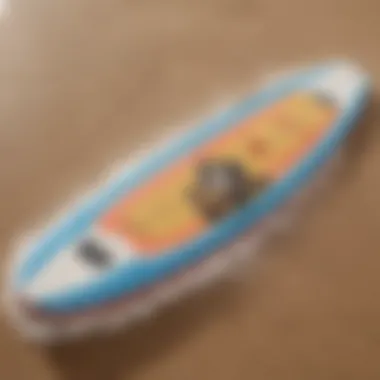
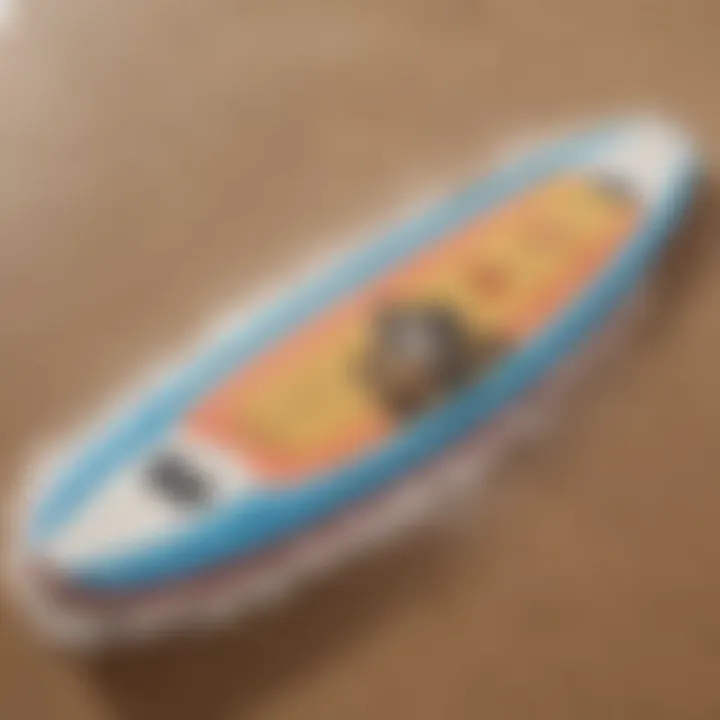
The material used in foam longboards is one of the most significant factors that set them apart from traditional surfboards. Generally, these boards employ materials like expanded polystyrene (EPS) or polyurethane (PU).
These foams are light as a feather, allowing for better buoyancy. A lightweight board may feel like you are paddling with little effort, which can make a world of difference, especially when you're just starting out or feeling fatigued.
Furthermore, the surface of foam longboards is often softer than that of conventional boards. This means you won’t have to worry as much about rough encounters with the board, which, let's be honest, can happen when trying to ride the waves. While a softer material might sound less durable, many of today’s foam boards are designed to withstand quite a bit of rough and tough surfing.
"Foam is becoming the preferred choice for many surfers due to its balance of lightweight feel and durability."
Dimensions and Shape Considerations
Dimensions and shape play a pivotal role in how a foam longboard performs on the water. The standard lengths usually range from 8 to 9 feet, but lengths outside this norm can also provide unique advantages. A longer board offers greater stability, excellent for catching smaller waves or manual paddling. On the flip side, a shorter board can provide better maneuverability in challenging conditions.
The width also matters—broader boards offer more surface area, which can contribute to stability but might diminish speed. Curvature in the design, often called rocker, can help in carving significant turns or in swift movements. A flatter rocker is generally preferred for cruising, while more pronounced curves aid in tighter turns.
When selecting a foam longboard, understanding these characteristics can prevent you from ending up with a board that doesn’t meet your surfing needs.
Fin Systems and Configurations
Fin systems and configurations are where the magic happens. The fin setup adjusts how the board behaves in the water. Most foam longboards have a thruster setup, which means three fins are used. This arrangement enhances stability and allows for tighter turns. Some surfers might prefer a single fin for that classic feel; it offers simplicity and smoothness on the wave.
Different configurations also determine how well a board can handle various surf conditions. A wider fin base can improve speed, while a narrower base might increase agility. It's like tuning an instrument—finding the right fin setup can significantly influence how harmonious your ride feels.
Benefits of Foam Longboards
When we talk about foam longboards, we’re diving into a segment of surfing that’s made waves for various reasons. From their positive impact on learning to the features that safeguard users, these boards offer a myriad of advantages that resonate with both newcomers and seasoned surfers alike. It’s crucial to lace up these benefits with thoughtful consideration, as the right foam longboard can influence the surfing experience significantly.
Enhanced Stability for Beginners
For those just wading into the surf world, stability can feel like that holy grail. Foam longboards tend to be broader than traditional hard boards, creating a stable platform that’s more forgiving in the water. This is particularly important for beginners who might still be finding their sea legs. The foam construction absorbs some of the erratic movements of the water, giving riders a bit more wiggle room when they’re trying to find their balance. It’s like having training wheels when learning to ride a bike—comforting, isn’t it?
Moreover, the weight of the foam helps maintain a lower center of gravity, which is crucial in smaller waves. Beginners can feel more confident paddling out and standing up without the board wobbling like a tightrope walker on a windy day. Those initial thrilling rides become memories rather than tumbles — a pretty significant emotional boost.
Safety Features of Foam Boards
When surfing, safety is non-negotiable. Foam longboards excel here, thanks to their soft surface. Unlike traditional boards, they won’t leave a nasty gash if you fall or collide with another surfer or even a friend. Imagine you take a dive into the water, and instead of getting a bruise that could end your day, you just push off, laugh it off, and get back on that board.
Additionally, many foam boards come with rounded edges, further reducing the risk of injury. This design aspect shows that manufacturers prioritize user safety, making these boards attractive to instructors teaching lessons to families or kids. That peace of mind, knowing that the board won’t turn into a dangerous weapon during wipeouts, is a pretty compelling reason to opt for foam.
"Safety isn’t just about gear; it’s about the design telling you it cares about the ride."
Lightweight and Buoyant
Another point to consider is the sheer ease of handling a foam longboard. The lightweight nature of these boards allows surfers to carry them with fewer grunts and groans. No one wants to wrestle an overly heavy board back to the car after a session. Furthermore, foam has a natural buoyancy, which helps the board float effortlessly on water. This feature is not only helpful for paddling but also makes it easier to catch waves.
Taking this into account, the buoyancy contributes to a splendid riding experience. As a surfer, the last thing you want is to be sinking while trying to catch that perfect wave. The seamless glide that a lightweight foam board can offer ensures that surfers can put their focus where it really matters — on riding and enjoying the ocean.
In summary, the benefits of foam longboards are stacked high. From enhancing stability for beginners to offering safety features that promote fun, and the lightweight properties that simplify riding, these boards hold significant merit in today's surf landscape.
Selecting the Right Foam Longboard
Choosing the perfect foam longboard is a key factor that can significantly affect one’s surfing experience. An effective selection process hinges on several elements, including individual skill levels, local surf conditions, and of course, budget constraints. In this section, we will dissect these components, helping surfers make informed decisions tailored to their unique surfing needs.
Assessing Skill Levels
Understanding your skill level is crucial when it comes to selecting a foam longboard. Beginners, for instance, require boards that promote stability and forgiveness. A wider, thicker board is easier to balance on, allowing fresh surfers to build confidence as they venture into the waves. On the other hand, those with more experience might prefer boards that offer flexibility and responsiveness, enabling advanced maneuvers.
An advisable starting point is to consider the following:
- Beginner: Opt for a longboard between 8 to 9 feet in length, with ample width (around 22 inches or more).
- Intermediate: A 7 to 8 foot board, with moderate width, provides a good balance for skill development.
- Advanced: Experience surfers often choose shorter boards, around 6 to 7 feet, for better control and precision.
By accurately gauging your skill level, you can select a longboard that either helps you grow or provides the performance you desire as you refine your surfing style.
Identifying Surf Conditions
Surf conditions play a vital role in the performance of a foam longboard. Different surf conditions demand different types of boards. Knowing the waves you’ll typically encounter can assist in making a wise choice.
- Small Waves: A wider and longer board aids in stability and catching waves with less push, which is ideal for small surf.
- Larger Swells: Opt for a board that is slightly narrower and has a pointed nose. This design allows for better speed and maneuverability in tougher conditions.
- Crowded Beaches: If hitting a busy surf sccene, a foam longboard with a thruster fin setup can help with quick turns and adaptability, giving you an edge to navigate through crowds.
Matching your board to typical surf conditions can lead to a more enjoyable and productive experience on the water.
Budget Considerations
Setting a budget is perhaps one of the more pragmatic aspects of selecting a foam longboard. Prices can vary widely based on brand, quality of materials, and design features. Here are some key points:
- Entry-Level Boards: For newbies, brands like Wave Bandit or Catch Surf offer great choices within a budget-friendly range of $200 to $400. These boards are designed for durability and ease of use.
- Mid-Range Options: Expect to spend $400 to $800 for boards such as the Softech or ETags options, which deliver better performance and longevity.
- High-End Purchases: If you’re willing to splurge, boards like the NSP and Firewire can go beyond $800, offering advanced features and premium materials that appeal to serious surfers.
When weighing your options, remember to consider not just the price tag, but also the potential resale value. Investing in a quality foam longboard can save you money in the long run if you decide to upgrade as your skills improve.
Key Takeaway: Investing in the right foam longboard can enhance your surfing experience and safety, enabling you to enjoy the ocean to the fullest.
By assessing your skill level, being aware of surf conditions, and establishing a budget, you’re setting yourself up for success in the beautifully diverse world of foam longboarding.
Techniques for Surfing with Foam Longboards
Surfing on foam longboards calls for specific techniques that can enhance one's experience on the water. The nature of foam longboards makes them unique, and understanding the techniques can greatly improve both safety and enjoyment, especially for those new to surfing. This section will discuss the critical aspects of paddling, catching waves, and performing maneuvers, providing a well-rounded view to help surfers make the most out of their foam longboard adventures.
Paddling Techniques


Paddling is the foundation of surfing. It’s your lifeline to the waves. When it comes to foam longboards, good paddling techniques can mean the difference between catching a wave and missing out. The flow can be described as a rhythm, a dance between you and the board. Here’s a breakdown:
- Body Positioning: Laying with your chest towards the board center is ideal. This helps in distributing weight evenly. Do keep your feet slightly apart to maintain balance and stability.
- Hand Movement: Use a long, smooth stroke. Check your elbow – it should bend, but not too much. A straight arm pulls water more effectively. Each stroke should be deliberate and steady, as if you're trying to row your way through calm waters.
- Timing is Key: As you paddle out, keep an eye on the waves. If you spot a wave coming, start paddling aggressively. The goal is to match the wave’s speed to ensure it lifts you without knocking you off balance.
Mastering paddling on a foam longboard is akin to crafting a song. It needs practice, but in time, it can lead to a soothing rhythm in the water.
Catching Waves Effectively
Catching waves on a foam longboard is where the magic happens. However, it requires a knack for timing, positioning, and a sprinkle of intuition. Here’s what you need to consider:
- Positioning on the Board: Before a wave hits, position yourself correctly. When you lay too far back, the nose may dip into the water. If you’re up front, you might nose dive. Experiment with slight adjustments until you find that sweet spot where the board feels right.
- Signal to Start: As the wave approaches, give a solid couple of paddles. The moment you feel the push from the wave, pop up quickly. A good rule of thumb is to pop up as if you’re trying to impress an audience; do it elegantly but swiftly.
- Ride the Wave: Once you’re standing, keep your knees bent and your weight distributed evenly. Remember, your feet should be shoulder-width apart to help maintain balance. Gravity and waves work better when you embrace that low center of gravity.
Catching that first wave is one of life's simple joys. With foam longboards, it’s easier than ever, making it a perfect entry point for newbies.
Performing Maneuvers
Maneuvering on a foam longboard can feel like navigating a giant ship, but practice can transform you into a skilled captain of your ride. Understanding how to perform moves safely can open up a whole new realm of enjoyment.
- Basic Turns: To perform a simple turn, apply pressure on your toes or heels. Lean into the direction you want to go. It's a bit like leaning into a curve on a bike. Start by doing gentle turns until you’re comfortable, then increase the sharpness.
- Advanced Tricks: If you start feeling confident, try some advanced tricks like the cutback or the noseride. For a cutback, once on a wave, shift your weight back and pivot in the opposite direction. It’s an exhilarating feeling, slicing through the water. Remember that safety is paramount – always choose your moments wisely.
- Reading the Wave: Understand how waves break, as this knowledge can lead to more controlled maneuvers. Watch from the beach, observe how surfers interact with the waves, and let it inform your own practice.
"With each maneuver, there’s an opportunity to connect with the ocean. The waves can be your canvas, and foam longboards your brush."
In summary, mastering these techniques can enhance not just your skill but also your enjoyment of foam longboarding. Each wave and every moment spent on the board creates experiences that weave into the fabric of why many surfers are drawn to the ocean.
Maintenance and Care for Foam Longboards
Maintaining and caring for foam longboards is not just a matter of aesthetics; it's crucial for ensuring longevity and performance. Just like any piece of equipment, these boards require attention to keep them in top shape. Regular maintenance can prevent minor issues from spiraling into major problems, allowing surfers to enjoy their ride rather than worrying about damage. Plus, with a bit of consistent care, your foam longboard will have a longer life and stay ready for the waves.
Regular Cleaning Practices
Cleaning your foam longboard should be as routine as waxing it or checking your leash. Saltwater, sand, and sunscreen residue can accumulate, potentially degrading the surface over time. Here’s a simplified approach to keep your board sparkling clean:
- Rinse After Each Use: Immediately after surfing, rinse your board with fresh water. This simple step helps remove salt and other residues that can corrode or damage the foam.
- Use a Soft Cloth: Invest in a soft microfiber cloth to wipe down the surface. Avoid abrasive materials that might scratch or scuff the foam.
- Occasional Soapy Wash: For a deeper clean, use mild soap mixed with water and a soft sponge. Gently scrub to remove stubborn marks but refrain from harsh cleaners that might strip protective coatings.
These practices don’t just keep your board looking good; they also prolong its lifespan and enhance the overall surfing experience.
Repairing Common Damages
Even with the best of care, accidents happen. Dings, scratches, or even cracks can occur during transportation or while riding the waves. Knowing how to handle repairs can save you money and ensure your board remains functional. Here are common damage types and how to tackle them:
- Surface Scratches: Most can be buffed out with some fine sandpaper or a soft polishing compound. It’s a simple, effective fix.
- Dings and Cracks: For small dings, a repair kit specifically designed for foam boards can be lifesaving. Follow the instructions closely, typically involving cleaning the area, applying resin, and allowing it to cure.
- Leash Plug Issues: If your leash plug comes loose, it often requires a bit of epoxy repair. It's best to handle this sooner rather than later to avoid water seeping into the foam.
Taking action at the first signs of damage not only keeps your board riding smooth but also prevents further degradation.
Storage Recommendations
Proper storage is a crucial part of foam longboard maintenance. The way you store your board can significantly impact its longevity. Consider the following tips:
- Avoid Direct Sunlight: Prolonged exposure to UV rays can weaken the foam and color, leading to fading and degradation. If possible, store your board indoors or use a UV-resistant board bag when outside.
- Use a Board Bag: A padded board bag can protect your longboard from bumps and scrapes during transport and storage
- Store Horizontally: When storing your board, keep it laid flat or on its rails, rather than leaning against a wall or resting on its nose or tail. This helps avoid warping or bending over time.
Keep those waves rolling in instead of worrying about your board’s condition. With proper maintenance, repair knowledge, and smart storage strategies, your foam longboard can be a reliable companion for many surf sessions to come.
Foam Longboards in Different Surf Conditions
Understanding how foam longboards perform in various surf conditions is key for surfers, regardless of their experience level. This knowledge not only enhances the surfing experience but also plays a crucial part in ensuring safety and enjoyment when riding the waves. Foam longboards, with their buoyancy and stability, can adapt well to changing surf conditions, making them versatile tools for surf enthusiasts. Let’s break down how these boards handle smaller waves, larger swells, and crowded spots.
Small Wave Performance
In small to medium surf, foam longboards shine. Their buoyant design allows riders to paddle easily and catch waves effortlessly. This kind of performance can be particularly beneficial for beginners, who may struggle with shorter, more agile boards. The broader surface area of a foam longboard enhances stability, allowing novice surfers to stand up and ride smoothly.
- Paddling efficiency: The extra volume provides ample buoyancy, which aids in catching those elusive waves.
- Surfing style: Foam longboards encourage a more relaxed riding style, adding to the fun during mellow surf sessions.
For seasoned surfers, small waves can be an opportunity to work on technique and style, executing long turns and more graceful maneuvers that foam longboards facilitate well. This balance of stability and performance will help to cultivate the skills needed for when the waves get more challenging.
Handling Larger Swells
When those big swells roll in, foam longboards still offer significant advantages. Their design helps riders manage powerful and fast-moving water, making it easier to navigate challenging conditions without feeling overwhelmed.
- Stability under pressure: With their size, these boards are less likely to be tossed around than smaller boards, allowing for confident rides.
- Safety: The safety profile of foam longboards is a standout feature, especially in bigger surf where wipeouts can be more dangerous. The foam construction reduces the chance of serious injuries upon impact.
Riding larger swells requires understanding how to position oneself on the board to harness the energy of the wave effectively. Experienced surfers can use foam longboards to their advantage, executing long bottom turns and maintaining speed on steeper sections.
Surfing in Crowded Conditions
Crowded beaches are a common sight in popular surf spots, especially during peak seasons. Here, foam longboards can stand out for their ease of use. Their wider design often means more surface area to help balance when navigating through a crowd of surfers.
- Maneuverability: While these boards might take up more space, skilled riders can use them to move cautiously through congested waters.
- Wave priority: Riders on foam longboards often catch waves more easily without needing to compete aggressively with others, which can be a significant advantage in busy conditions.
The right technique becomes essential in crowded situations. Surfers should stay vigilant and make calculated decisions about when and where to catch waves. Most importantly, maintaining respect and awareness for fellow surfers ensures a safer and more enjoyable environment for everyone.
"A calm mind creates a ripple of clarity on crowded waves."
Environmental Impact of Foam Surfboards
Understanding the environmental impact of foam surfboards is crucial, especially in today's climate where sustainability has become a buzzword. For surfers eager to enjoy their craft while being conscious of their ecological footprint, there's much to unpack regarding material sourcing, production processes, and the lifespan of surfboards.
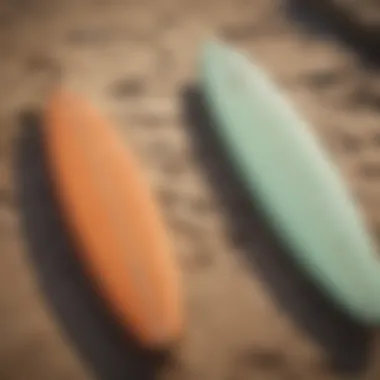
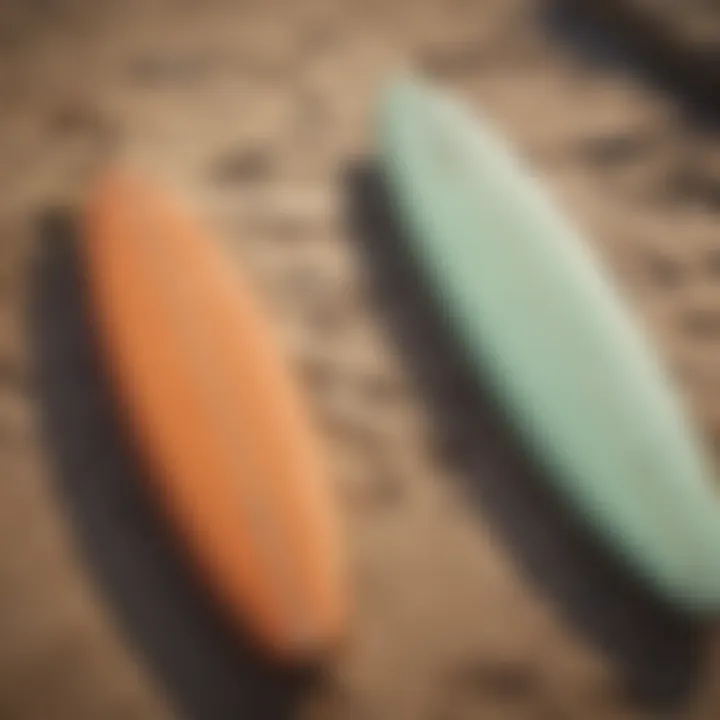
Sustainable Materials and Practices
When it comes to sustainable practices in surfboard manufacturing, the spotlight shines on the materials used. Traditional surfboards often involve both polyurethane foam and fiberglass, which are not the most environmentally friendly choices. In contrast, newer foam longboards are frequently made from eco-friendly options like EPS foam or bio-resins, which significantly reduce harmful emissions during production.
Using materials like recycled foam can also lessen the need for new raw materials, creating a less resource-intensive product. Another important aspect is the production methods. Manufacturers who prioritize eco-conscious practices often utilize low-emission processes, which can minimize their overall carbon footprint.
- Key sustainable materials:
- EPS foam
- Bio-resins
- Recycled plastics
Many companies are stepping up their game to comply with international environmental standards. The concept of sustainable practices extends beyond just the materials used; it's also about the entire lifecycle of the surfboard, including responsible sourcing and ethical labor practices.
Recycling and Disposal Options
When foam boards have seen better days, how we dispose of them is of serious consequence. Most foam longboards can take many years to decompose, sitting in landfills for what seems like centuries. This calls for a strong movement towards recycling.
Fortunately, some organizations and local surf shops are now offering recycling programs specifically for used surfboards. Here's how these options typically work:
- Drop-off Locations: Many surf shops accept old boards for recycling, ensuring they are dismantled and processed effectively.
- Repurposing: Some boards can be refurbished or turned into new surfboards, extending their lifespan.
- Creative Uses: Communities have found inventive ways to use damaged boards—art projects, community benches, and even insulation material.
"Recycling is not just a trend; it's a necessity to minimize our waste and protect what we love the most—our oceans."
While these solutions are gaining traction, awareness remains a hurdle. It’s essential for surfers to understand the importance of addressing these options, making informed choices that promote a healthier ocean environment. The power lies in our hands, and every step towards sustainability, no matter how small, adds up to a big difference.
The Future of Foam Longboard Technology
As surfers look to ride the waves of innovation alongside the tides, foam longboard technology has been advancing remarkably. These developments in materials and designs are pivotal, providing surfer enthusiasts with safer, more efficient, and environmentally-friendly options. Embracing these advancements not only enhances the surfing experience but also promotes sustainable practices within the sport. This section will delve into two key areas: advancements in materials and innovative designs and features, to illustrate how they shape the future of foam longboarding.
Advancements in Materials
In recent years, there has been a growing emphasis on employing advanced materials in the production of foam longboards. Traditional foam boards often utilized expanded polystyrene, which, while effective for buoyancy, has its downsides in terms of durability and environmental impact.
Modern surfboard manufacturers are turning towards more sustainable alternatives, such as bio-based foams made from renewable resources. These materials not only reduce the carbon footprint but also offer excellent performance characteristics. Benefits include:
- Durability: Newer materials are engineered to withstand impacts better than traditional foam. They are more resistant to punctures and straining even in harsh surfing conditions.
- Lightweight Innovation: Advanced composites lead to lighter boards, making them easier to transport and handle in the water.
- Eco-friendliness: Companies are incorporating recycled materials or creating bio-foam that breaks down after its useful life, addressing both environmental concerns and consumer demand for greener products.
The shift towards these enhanced materials reflects a broader trend in the surfing community that prioritizes environmental sustainability without sacrificing performance.
Innovative Designs and Features
Improving upon traditional shapes, the designs of foam longboards continue to evolve. Innovations not only focus on aesthetics but also on enhancing the functionality and performance of the boards. The following features are emerging as game-changers:
- Wider Nose and Tail Designs: Boards with wider noses facilitate easier paddling while catching waves, while wider tails improve stability and maneuverability on bigger swells.
- Adaptive Fin Systems: Incorporating multiple fin setups allows surfers to customize their ride based on conditions. Flexible fin system designs enable quick changes and adaptations, adding versatility.
- Ergonomic Grip and Deck Features: Attention to the surface design, such as textured and cushioned decks, enhances grip, ensuring that surfers maintain their stance even in wet conditions.
- Soft Rails: Edges of the boards are being softened, making it safer for beginners and reducing the chances of injury in crowded conditions or mishaps.
"The evolution in foam longboard features shows that craftmanship and functionality are intertwined, making every ride an adventure and much safer for all."
These innovations bring together safety, performance, and adaptability—key ingredients for both novice surfers and seasoned pros.
The future of foam longboards isn’t just about riding the waves. It's also about riding the tide of innovation, promising a surfing experience that is not only exciting but also responsible.
Buying a Foam Longboard: Expert Tips
When it comes to purchasing a foam longboard, there’s a lot more than just picking the first one you see. This decision can mean the difference between a thrilling ride and a frustrating day at the beach. Understanding the ins and outs of buying one can set you up for success, particularly in terms of performance and enjoyment. Here, we’ll delve into some crucial aspects to consider while making your choice.
Where to Shop
Searching for the right place to buy your foam longboard can be like looking for a needle in a haystack. However, knowing where to look can save you both time and potential disappointment. Here are a few places to consider:
- Local Surf Shops: These establishments often have knowledgeable staff who can guide you through your options based on your skill level.
- Online Retailers: Websites like Amazon or specialized surf board retailers often have a wider variety and sometimes better prices. However, be cautious; make sure you’re reading reviews and understanding the return policy.
- Second-Hand Markets: Platforms like Facebook Marketplace and Reddit can be treasure troves for finding good deals, but it’s key to inspect the board thoroughly to avoid unwelcome surprises.
Finding a reliable seller, regardless of the avenue you choose, can set the tone for your entire surfing experience.
Understanding Warranties and Returns
Purchasing a foam longboard can be quite an investment. Therefore, knowing the warranty and return options is essential. A good warranty can act as a safety net in case of defects or dissatisfaction with your board. Here’s what to look for:
- Duration of the Warranty: Some brands offer warranties ranging from six months to several years. A longer warranty usually reflects confidence in the product’s quality.
- Coverage Details: Understand what the warranty covers specifically. Does it include repairs for damages that are your fault, or just factory defects? This could save you a pretty penny down the road.
- Return Policy: It's vital to be aware of how long you have to return the board if it doesn’t suit your needs. Many retailers allow returns within 30 days, but some may have more generous policies.
"A good warranty is like a safety net—necessary for peace of mind when you’re diving into a new adventure."
Being informed about warranties and returns helps to shield your investment and provides a backup plan if things don’t go as expected. In a dynamic world like surfing, these guidelines can be the key to unlocking the full potential of your foam longboard experience.
Finale: Embracing Foam Longboarding
As we wrap up our deep dive into the world of foam longboards, it's vital to underscore how these boards not only influence individual surfing experiences but also foster a sense of belonging among surfers. Embracing foam longboarding means welcoming a community that celebrates safer, more enjoyable surfing for everyone. Whether you're a newbie taking your first paddle or an experienced surfer exploring new techniques, the benefits of foam longboards are apparent. They simplify the learning curve while providing stability, safety, and a fun ride.
Building a Community of Enthusiasts
Engagement within the foam longboarding community is more than just sharing surfing tips; it’s about creating a network where experiences are shared, advice exchanged, and friendships formed. From local surf schools to vibrant online forums, places like reddit.com and facebook.com are treasure troves of information and camaraderie.
- Events and Gatherings: Competitions, meet-ups, and workshops around surf culture can help foster connections. Participating in local or regional longboard events allows surfers of all skill levels to learn from one another, enriching their understanding of foam boards and surfing in general.
- Mentorship: Seasoned surfers can guide those just starting out, passing on knowledge about wave patterns, board maintenance, and surf etiquette. A good mentor helps newcomers become confident enthusiasts, propelling them to embrace the sport wholeheartedly.
- Online Communities: Digital platforms are crucial for ongoing discussions. Online groups encourage sharing experiences, whether it's a protruding snub on the board or a powerful wave that was caught.
Building this supportive community is essential in transforming the sometimes solitary pursuit of surfing into a shared journey.
Encouraging Responsible Surfing Practices
With the rise of foam longboarding, a greater responsibility falls on the community to practice and promote sustainable surfing habits. Encouraging responsible surfing isn’t merely about environmental impact; it embodies respect for the ocean, fellow surfers, and beachgoers.
- Leave No Trace: One key principle is to ensure that all equipment, whether foam boards or accessories, does not harm the delicate ecosystems coastal areas harbor. This means packing out what you bring in, whether that’s trash, gear, or any waste.
- Respecting Local Regulations: Different surf spots may have specific rules; understanding and respecting these guidelines fosters a positive environment for everyone. Ignoring local customs can not only lead to conflicts but also endanger delicate habitats.
- Educating Others: Sharing knowledge about sustainablity is part of being an advocate for the sport. When surfers educate others about the importance of marine life and wave conservation, the message resonates, potentially influencing behaviors beyond the board.
This responsible focus broadens the appeal of foam longboarding, aligning with current environmental trends while creating a culture that respects the ocean and promotes safety and enjoyment. Together, by building a community and encouraging responsible practices, foam longboarding can flourish as a celebrated facet of surfing culture, fostering an inclusive and sustainable surfing experience.















